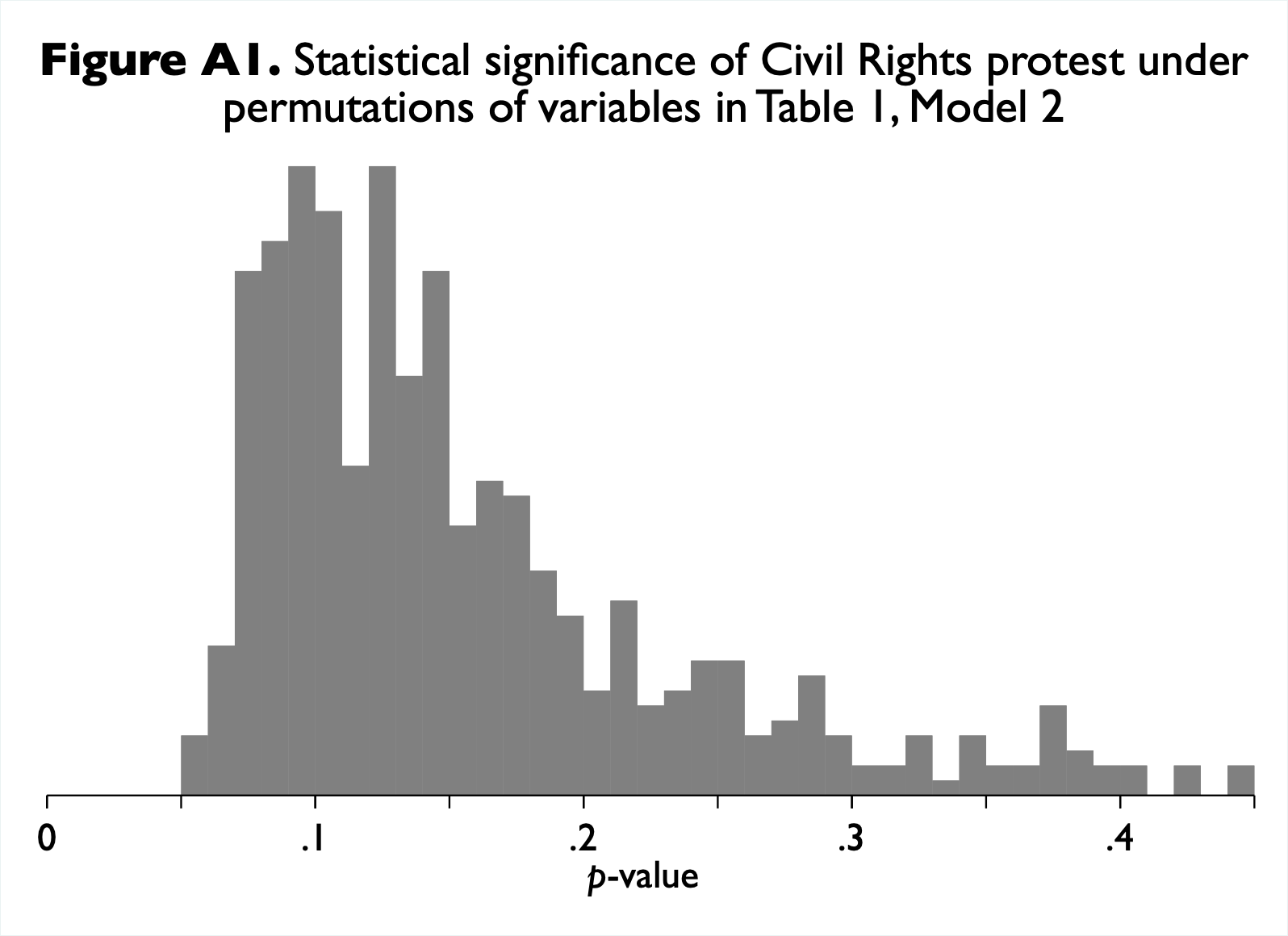 Mazumder (2018) investigates the long-term effect of protest on political attitudes. He finds that whites have more liberal views on race and are more likely to be Democrats in counties where Civil Rights protest was reported in the early 1960s. The analysis omits a crucial predictor of protest and of racial attitudes: college education. We include the proportion of adults with a college degree and the number of college students at the county level. The inclusion of these variables, along with some other contextual variables from the original dataset, cuts the effect of protest by about half. Protest is no longer statistically significant in eight out of nine combinations of outcome variables and protest measures. The size of the effect remains trivial when we shift analysis from the county to the individual level. Even accounting for the individual’s own education, the county’s proportion of college graduates is strongly associated with racial liberalism. This finding emphasizes the importance of education as a contextual variable. Our conclusion highlights two methodological lessons. First, causal inference should be paired with sustained historical inquiry that specifies plausible mechanisms. Second, statistical tests for sensitivity can induce complacency about the risk of confounding.
Mazumder (2018) investigates the long-term effect of protest on political attitudes. He finds that whites have more liberal views on race and are more likely to be Democrats in counties where Civil Rights protest was reported in the early 1960s. The analysis omits a crucial predictor of protest and of racial attitudes: college education. We include the proportion of adults with a college degree and the number of college students at the county level. The inclusion of these variables, along with some other contextual variables from the original dataset, cuts the effect of protest by about half. Protest is no longer statistically significant in eight out of nine combinations of outcome variables and protest measures. The size of the effect remains trivial when we shift analysis from the county to the individual level. Even accounting for the individual’s own education, the county’s proportion of college graduates is strongly associated with racial liberalism. This finding emphasizes the importance of education as a contextual variable. Our conclusion highlights two methodological lessons. First, causal inference should be paired with sustained historical inquiry that specifies plausible mechanisms. Second, statistical tests for sensitivity can induce complacency about the risk of confounding.
Michael Biggs, Department of Sociology, University of Oxford